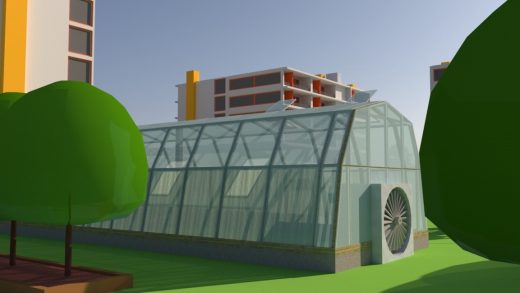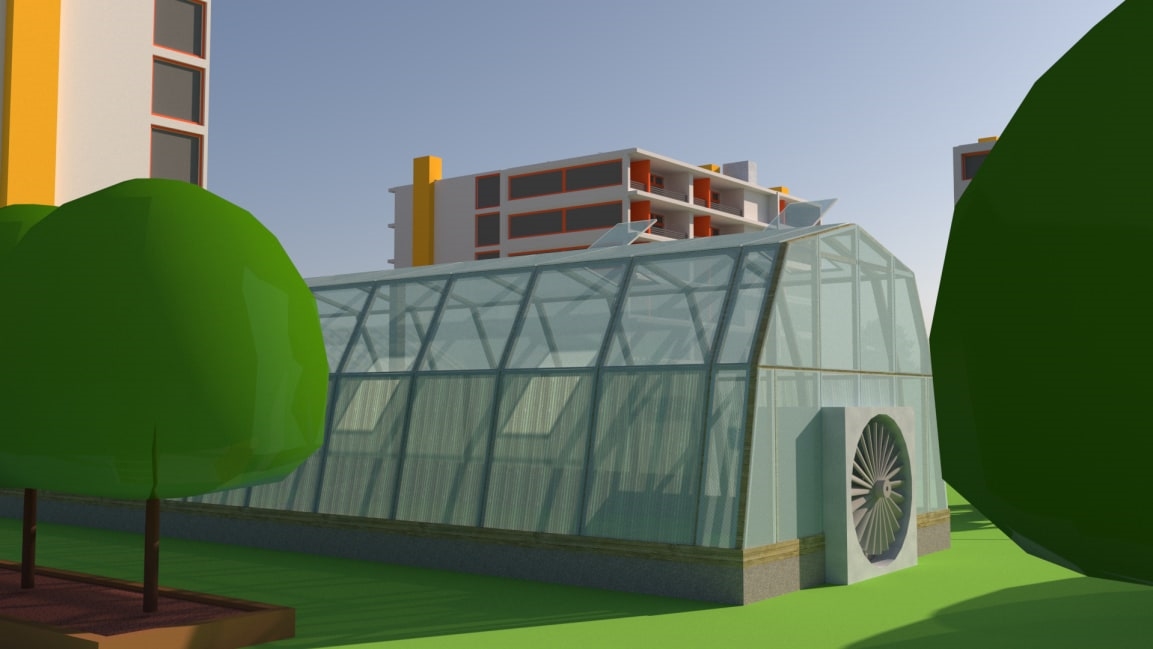What if all our buildings were sucking carbon from the air?
The first commercial carbon removal plant, where CO2 is sucked out of the air and stored underground, is in a remote part of Iceland, nowhere near a city. It’s a massive industrial operation. But the carbon-capturing technology doesn’t need to be sequestered to the middle of nowhere: It could also be incorporated into neighborhoods—something that might help build community support for the larger build-out of industrial plants that will likely be needed to help tackle the climate crisis. By the middle of the century, thousands of large direct air-capture plants may be needed globally to pull emissions from the atmosphere at the same time as the economy decarbonizes.
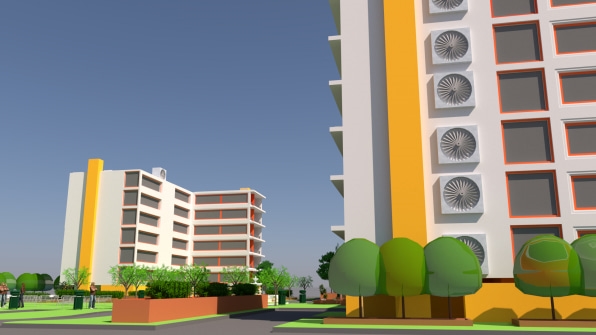
In new renderings, Carbon180, a nonprofit focused on carbon removal, imagines how the technology could be added to local parks or apartment buildings or grocery stores. “When we think about direct air capture today . . . we think of these very large-scale industrial facilities, which we know are going to be necessary in order to meet the scale of the climate crisis and to meet our carbon removal goals,” says Giana Amador, cofounder and policy director of Carbon180. “But we also think there’s a role for smaller-scale innovative projects that are integrated into communities.”
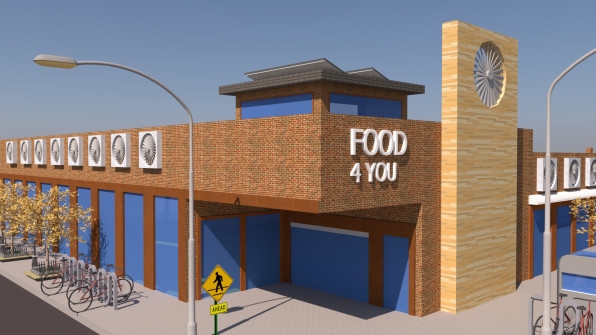
The technology can be used anywhere on the planet, since it pulls carbon directly from the air, and the air everywhere is full of carbon. Because of the logistics of moving CO2 around, many plants will be located next to the places where the carbon can be stored—for example, at an old oil well, where it can be pumped underground into rock formations. Because the technology uses a lot of energy, it also makes sense to put it next to cheap renewable sources (at the recently-built plant in Iceland, the process runs on geothermal energy). In other cases, it could be built next to factories that could use the CO2, instead of fossil fuels, to make new materials.
A distributed network of direct air-capture tech in a city wouldn’t be as practical if the CO2 can’t be used onsite. Still, Amador says, neighborhood plants could help people become comfortable with unfamiliar technology. The nonprofit considered how the equipment, which uses large fans to pull air into filters that extract the CO2, could be added to a neighborhood park, for example, or built into a grocery store running on rooftop solar power. In an apartment building, the technology could be added into the building’s heating and ventilation system to filter CO2 out of the indoor air, helping to improve indoor air quality. Captured CO2 could potentially be used in an on-site greenhouse to grow local food.
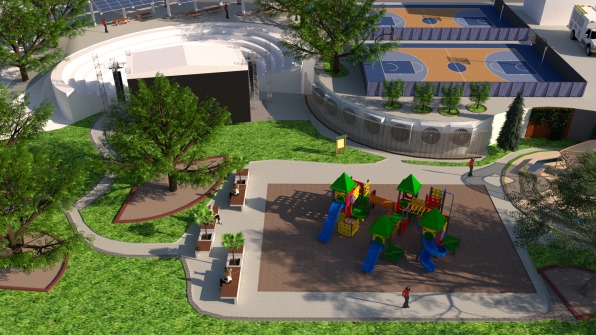
The direct air-capture industry hasn’t yet done enough to engage with community groups who have concerns about new industrial sites. “I think a lot of the concern comes down to the fact that direct air capture is a fairly nascent technology,” Amador says, “which means we have a lot of open questions about how this technology impacts local communities. Right now, across the globe, there are about a dozen direct air-capture facilities, and altogether they’re capturing on the order of 10,000 tons of CO2. And it’s a big jump to move from that in these sort of very remote places like Iceland, where you’re at a research facility, to thinking about how these might actually be sited on the gigaton scale across the entire United States.” Smaller urban projects could help build public trust. Community members can help shape design decisions, choices about land use, and the benefits that new projects can bring, including new jobs.
Better policy can help communities have more of a voice, says Amador. The new infrastructure bill has billions in funding for new direct air-capture projects. “The federal government can take into account community engagement and these community benefits when they’re selecting projects,” she says. “I think by doing so, we can really not just create high quality direct air-capture projects and direct air-capture hubs, but really propel the field forward and move a lot faster.”
Fast Company , Read Full Story
(29)

